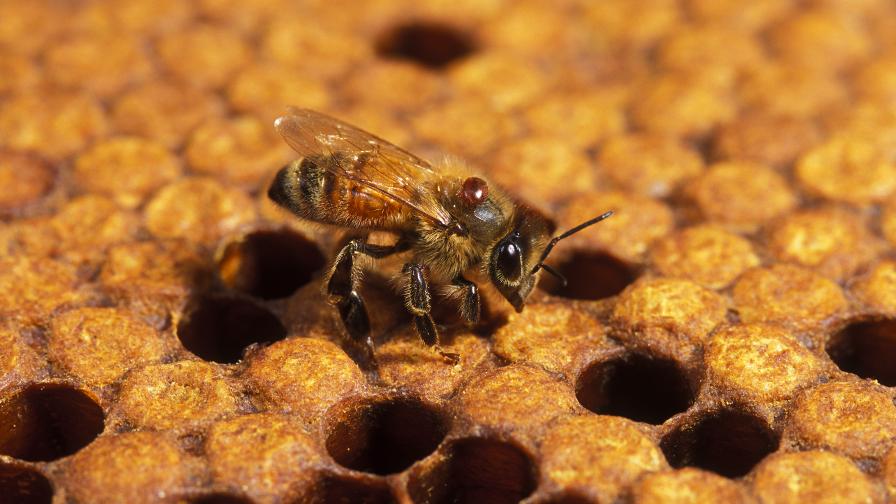Cool! Varroa-Mite Resistant Honey Bees Better Suited To Survive the Winter

Developed by USDA-ARS scientists, Pol-line honey bees feature a resistance to Varroa mites, making them more likely to survive the winter compared to its standard counterparts.
Photo by Stephen Ausmus
According to a new study published in Scientific Reports, Pol-line honey bees, a type of Varroa mite resistant honey bee developed by USDA’s Agricultural Research Service, are more than twice as likely to survive through the winter than standard honey bees.
Although Pol-line bees were developed in 2014, this study was the first time that they were tested head-to-head alongside standard honey bee stock in commercial apiaries providing pollination services and producing honey. Colonies’ ability to survive winter without being treated to control Varroa mites was followed in four states: Mississippi, California, and North and South Dakota.
In this study, Pol-line colonies that were given no treatment to control Varroa mites in the fall had a survival rate of 62.5% compared to standard bees colonies in commercial apiaries also given no fall Varroa treatment, which had a winter survival rate of 3%.
When Pol-line colonies and standard colonies were treated against Varroa mites in both fall and December, Pol-line bees had a winter survival rate of 72% while standard bees had a survival rate of 56%. So, Pol-line bees still had a better winter survival rate regardless of receiving double Varroa mite treatment.
“These survival results continue to highlight the importance of beekeepers needing to manage Varroa infestations,” says research molecular biologist Michael Simone-Finstrom, co-leader of the study. “The ability to have high colony survival with reduced or no Varroa treatments can allow beekeepers to save money and time.”
This research was the culmination of breeding efforts to develop honey bee colonies with naturally low Varroa populations that began at the Baton Rouge lab in the late 1990s.
Winter colony survival is crucial for beekeepers because in February each year, about 2.5 million honey bee colonies are needed in California to pollinate almond crops. Larger, healthier colonies bring beekeepers premium pollination contracts at about $220 a colony.
Varroa mites can cause massive colony losses; they are the single largest problem facing beekeepers since they spread to the U.S. from Southeast Asia in 1987. While miticides used to control Varroa exist, resistance is developing to some of them.
For more, continue reading at ars.usda.gov.










